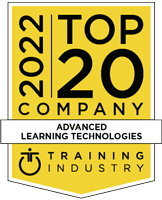Regulating Continuing Education in the Water and Wastewater Industry
Despite there being a single mandate from the EPA that states regulate continuing education in the water and wastewater industry, there are 50 different solutions among the 50 states! Worse, while most states have enacted some form of regulation for online continuing education, most have been provided little direction of how to regulate this rapidly expanding form of delivery.
This has become increasingly important as the COVID-19 pandemic and the resultant responses of authorities to limit contact has all but eliminated most traditional forms of continuing education.
The issue of determining how to regulate credit for online study is not complicated - and shouldn’t be. In fact, as a regulator, you already have the guidelines in place . . . they are the same as for live training!
They HAVE to be the same - it would be unfair to operators taking courses one way or the other to have to meet two separate sets of standards and it would be unfair to the companies that offer live vs online training to hold them to two standards.
Regardless of how courses are delivered, there are four simple criteria that have to be met for ANY continuing education – in-person training, live Web presentations, pre-recorded presentations, or online options.
A supplier of continuing education must simply be able to satisfactorily answer the following:
- How do you confirm that the materials presented are relevant to the job for which the continuing education is being earned?
- How do you confirm the identity of the participant?
- How do you ensure that the participant is provided education for the full time duration for which credit is awarded?
- How do you ensure that the participant remains engaged throughout the course?
With traditional onsite training, these criteria are met and confirmed by the course provider present with the attendees and therefore able to verify all of these criteria. Online education is a little different, but modern learning management platforms address these same issues to ensure the integrity of the credit awarded. In order:
- The course materials can be reviewed for content the same as live courses and, in fact, it is easier because content can be reviewed online.
- The identity of the participant can be confirmed by use of a login with a secure password set up and known only to the participant.
- Ensuring the integrity of a full hour of participation for an hour of credit is simply a matter of controlling the environment. In other words, a Certificate of Completion should not be awarded until the full duration of training has been completed AND there must be no way to fast forward or otherwise override the time factor. (Beware that there are programs that allow for a couple of minutes of fast forwarding through a set of slides and then just waiting for a timer to run out to allow for earning an hour or two of credit!).
- There are many complex mechanisms available for ensuring engagement, but we’ve found that the simplest is to simply have questions "pop up" on the screen at random times throughout the course which are relevant to the materials presented and requiring that those questions be answered within a few seconds (30 - 45 is fair) confirming that the participant has been present and paying attention (and didn’t just walk away to come back when the course "times out”).
WARNING: Do NOT assume that trade organizations have vetted programs they submit for credit. In fact, at least one national trade group is shamelessly being paid to submit/endorse/promote programs that fail to meet these standards. (There are several states that are currently investigating this, and put bluntly, the responsibility for ensuring compliance lies with the state, not the provider.)
Continuing education is not just about earning credits – it is about gaining knowledge. Consistent regulation and holding suppliers accountable for the integrity of their programs will help ensure that goal is met.
Thank you for taking time to read this and to considering just how easy implementing online continuing education can be and thanks for doing your part to support America’s most precious resource – our water.

